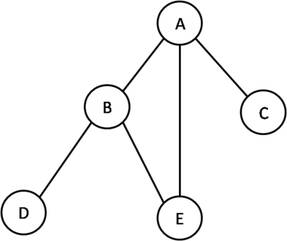Use of multi-dimensional arrays to represent data structures

In coming chapters, we can communicate approximately many extraordinary information structures and algorithms. one of the key statistics systems we’re going to recognition is the graph. We already recognise the definition of graph information systems. maximum of the time we are able to be the usage of personal home page multidimensional arrays to symbolize that records as an adjacency matrix. allow us to keep in mind the following graph diagram:

Now if we take into account each node of the graph to be a fee of an array, we are able to constitute the nodes as:
$nodes = ['A', 'B', 'C', 'D', 'E'];however this will handiest supply us node names. We can’t join or create a relationship between nodes. as a way to try this, we want to construct a -dimensional array wherein the node names can be keys, and values may be 0 or 1 based totally at the interconnectivity of nodes. when you consider that there…
Creating fixed size arrays with the SplFixedArray method
up to now, we’ve explored php arrays and we recognize, we do not define the size of the arrays. personal home page arrays can develop or shrink as according to our demand. this adaptability comes with a awesome inconvenience regarding memory usage. we are going to explore that in this segment. For now, let us cognizance on developing constant size arrays the use of the SPL library.
Why will we need a hard and fast length array? Does it have any introduced advantage? the solution is that when we recognise we only need a positive range of factors in an array, we are able to use a set array to lessen the memory utilization. before going to the memory use analysis, allow us to have some examples of using the SplFixedArray technique:
$array = new SplFixedArray(10);for ($i = 0; $i ...